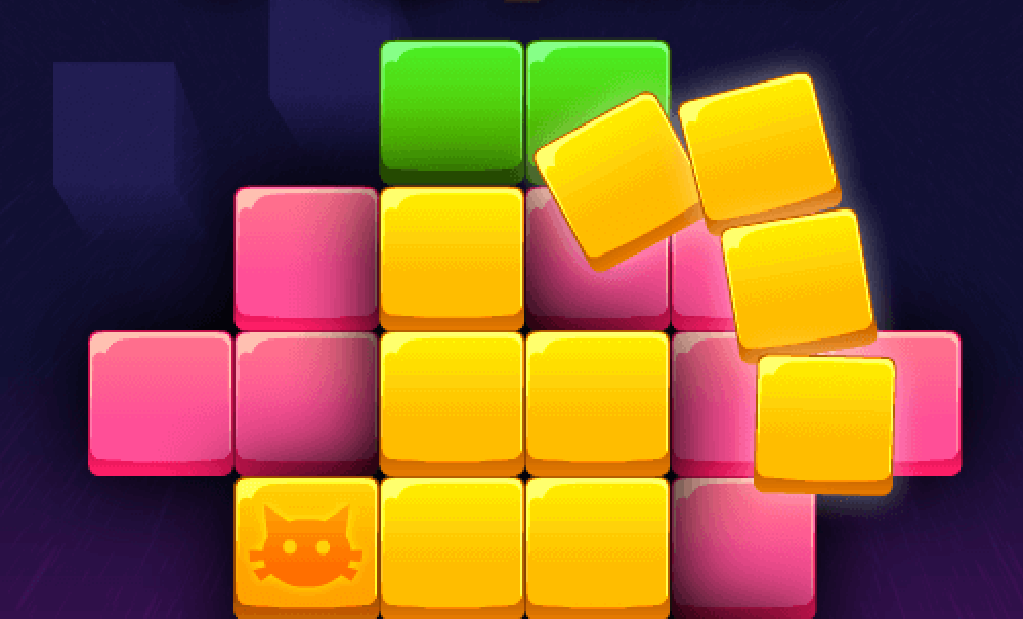Simple mechanics is the name of the game in Matchform, except very suddenly, it becomes complex. At the beginning, the player is presented with a series of square blocks in a rectangle. Along the top are the patterns in which you can remove blocks from the rectangle. As you remove the blocks, they are systematically replaced by different coloured blocks, following the same pattern. This means that removing one line of orange, then later removing another line of orange, will end up with a solid area of blue.
However, block patterns can only be drawn with the same colour, meaning you not only have to practise simple shape recognition to remove blocks from the puzzle, you also have to use predictive reasoning to be able to predict both what types of block patterns come up next, but also where you might be several turns’ times. Are you going to have enough blocks to be able to keep going?[sc name=”quote” text=”Are you going to have enough blocks to be able to keep going?”]
If at any point you suffer the sad taste of death and are unable to match any blocks, a moment of silence occurs – presumably to mourn your fleeting intelligence – and you are then asked if you want to pay gems to be able to continue, else restart the level.
The level system is something that also provides a difference from other games of the same genre – as you match blocks, the number of blocks removed gives you points that, when you get enough to reach the total displayed at the very top of the screen, allow you to go to the next level. The next level gives you something your wildest dreams could never have imagined:
Two more blocks.
These two blocks give you more space to match block patterns, thus allowing you to remove more and more blocks and score more points, eventually getting you higher and higher through the levels.
Block puzzles often do this, rewarding you with additional squares on the playing field for beating the level. With regard to game design, it’s very interesting to observe as it both rewards and punishes the player.
Though you get more spaces to progress through the game, the limited and sometimes somewhat odd way the blocks are added means that you will be left with a corner block that just won’t fit anywhere at all. In a way, it’s a very suitable punishment for the poor fellows that get addicted to Matchform.[sc name=”quote” text=”In a way, it’s a very suitable punishment for the poor fellows that get addicted to Matchform.”]
The problem is that Matchform is so good at what it does that you will most likely get addicted no matter what you do. Your life won’t be your own, you decisions made by something else – anything to get you closer to reaching that elusive level 10 and finally getting rid of all those blocks.
Matchform takes a fairly simplistic genre and gives it a satisfying twist, enough to captivate the player into throwing their life away in pursuit of better shape recognition skills.
[review pros=”Popular game style given new life. The level system helps encourage the player to give over even more of their time.” cons=”More explanations for the scoring system or a predictive logic to patterns could help players stay motivated.” score=9]
[appbox appstore id1218000735]













